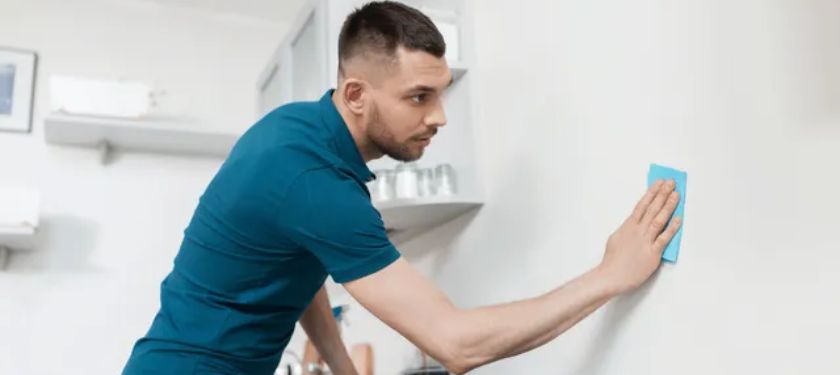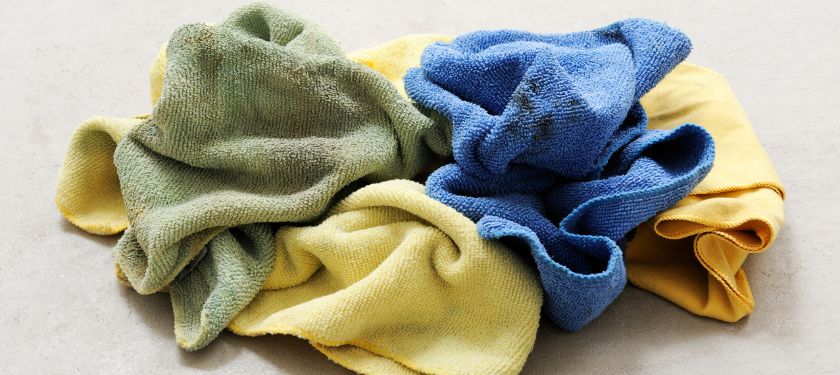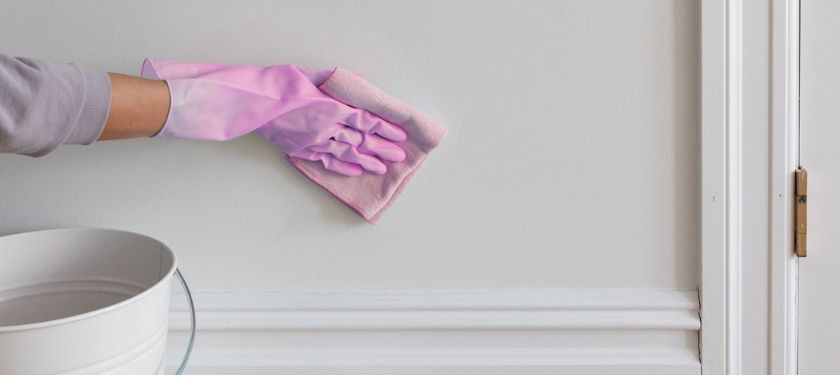Reliable Ways to Clean Painted Surfaces Without Damage

Effective Strategies for Cleaning Painted Surfaces Smoothly
Gather Necessary Tools for Cleaning Painted Surfaces
The first step is to gather all essential tools before starting the cleaning process. These include soft microfiber cloths, non-abrasive sponges, soft-bristle brushes, buckets, and plastic scrapers if needed. It is also advisable to have protective gloves and eyewear for safety. The chosen tools must be gentle enough to not scratch the painted surface while still effectively removing dirt. For example, microfiber cloths are excellent due to their fine fibers which capture dust and grime without damaging the paint.
Additionally, using a new or thoroughly cleaned cloth each time prevents the reintroduction of particles that could mar the finish. This preparedness sets the foundation for a smooth cleaning process, ensuring that the surface is treated with care from the first wipe.
Choose the Right Cleaning Solution for Painted Surfaces
Selecting a cleaning solution that is effective yet gentle is crucial. Water mixed with a small amount of mild dish soap is often sufficient for routine cleaning. For more stubborn stains, diluted vinegar solutions or trisodium phosphate (TSP) can be employed with caution.
It is important to avoid harsh chemicals, such as acetone or strong ammonia, as they can strip the paint’s protective layer. When using phosphate-based cleaners, always dilute according to manufacturer instructions to avoid residue build-up. The right cleaning solution will effectively lift dirt without impairing the paint’s color or texture. Many cleaning professionals recommend testing the solution on a discreet area first to ensure compatibility; this practice minimizes the risk of widespread damage and maintains consistency across the cleaned surface.
Test Cleaning Methods on Small Areas First
Before committing to a full-scale cleaning session, testing your chosen method on a small, inconspicuous area of the painted surface ensures that no damage occurs. Spot tests help identify if the cleaning solution may affect the finish or cause discoloration.
For instance, even when using a diluted vinegar solution, testing ensures that the mild acidity does not compromise the paint’s adherence. This preliminary step is particularly important for older or high-gloss painted surfaces where the risk of damage is greater. Careful observation during the test phase can prevent large-scale mishaps and allow for adjustments in the cleaning process. In this way, you protect your investment in the painting job, ensuring longevity and visual appeal.
Use Soft Cloths and Tools to Avoid Scratching

Using only soft cloths and non-abrasive tools is essential when cleaning painted surfaces. Brushes with hard bristles or rough abrasive pads can leave tiny scratches that accumulate over time, dulling the overall appearance of the paint. Instead, opt for microfiber cloths which are known for their softness and high absorbency.
The gentle action of these cloths provides a safe way to lift away dust and minor stains without compromising the finish. Additionally, using a soft sponge rather than a coarse scrubber minimizes friction and helps maintain the smooth texture of the surface. By ensuring that all materials in contact with the painted surfaces are soft and specifically designated for delicate cleaning tasks, you create a safer cleaning environment that prolongs the life of your paint.
Follow Safe Techniques for Different Paint Types While Cleaning Painted Surfaces
Different types of paint, such as latex, enamel, or oil-based finishes, require tailored cleaning techniques. For latex-painted walls, water-based solutions are ideal as they match the paint’s emulsified nature, reducing the risk of streaking or peeling.
For oil-based paints, it is better to avoid excessive moisture which can soften the surface. In some cases, a mild solution combined with a light touch is enough to remove grime, particularly on satin finishes. Effective cleaning techniques include avoiding prolonged contact between the cleaning solution and the surface, and using circular or gentle wiping motions rather than harsh scrubbing. Being aware of the paint type and its sensitivity allows you to adjust your approach accordingly, ensuring no damage occurs during the process.
Rinse and Dry Surfaces After Cleaning Carefully

After cleaning, it is vital to rinse the surface with clean water to remove any leftover cleaning solution. Residues can lead to discoloration or attract more dirt, counteracting the cleaning efforts. Once rinsed, immediately dry the surface with a clean, dry microfiber cloth. Drying carefully prevents water spots and further damage, particularly on glossy or matte finishes that may absorb residual moisture. Quick and thorough drying also helps maintain the adhesion and longevity of the paint. By removing both the cleaning solution and the moisture promptly, the surface remains pristine and safeguarded against potential streaking or degradation.
Safe Household Items for Cleaning Painted Surfaces
Utilize Warm Water and Mild Soap for Light Cleaning
For regular cleaning tasks, warm water combined with a small amount of mild dish soap is an excellent, safe household solution. This mixture is effective at removing dust, light stains, and general grime while maintaining the delicate balance required to not harm the paint. The use of warm water aids in dissolving and lifting away grime, and the soap acts as an emulsifier, breaking down oily residues. After applying the solution with a soft cloth, rinse with clean water and wipe dry to avoid leaving behind any soap residue.
This method is not only cost-effective but also minimizes the use of harsher chemicals that can deteriorate the painted surface over time, ensuring a long-lasting, clean finish on walls and furniture.
Try Vinegar as a Natural Solution for Stains When Cleaning Painted Surfaces
Use Baking Soda for Tougher Grime Removal
Baking soda is another common household item that is effective for cleaning more stubborn grime and oily spots on painted surfaces. When mixed with water, baking soda forms a mild abrasive paste that can remove dirt without scratching the surface. Its alkaline nature helps neutralize acidic residues left by other cleaners.
When using baking soda, apply the paste with a soft cloth or sponge, gently massage it into the area, and then rinse thoroughly with water. This method is especially useful on walls and baseboards where oil and fingerprints accumulate over time. The mild abrasive quality of baking soda ensures that while grime is being removed, the integrity of the paint is preserved.
Avoid Harsh Chemicals That Damage Paint Finishes
While there are numerous cleaning agents on the market, many contain harsh chemicals such as acetone, strong ammonia, or bleach that can strip or discolor paint finishes.
These chemicals not only remove grime but also degrade the paint’s protective layer, leading to premature wear and increased risk of peeling. It is important to avoid these products or use them only in extremely diluted forms and for spot cleaning. Instead, opt for cleaning alternatives that provide effective cleaning power while lulling the surface in safe, non-toxic ingredients. By avoiding harsh chemicals, you maintain the appearance and longevity of your painted walls, preventing damage that could escalate repair costs and maintenance needs.
Maintain Regular Cleaning Schedules for Painted Surfaces
Key Takeaways: – Warm water and mild soap create a safe cleaning solution for routine maintenance. – Vinegar, when diluted, effectively removes stains and is a natural, eco-friendly cleaner. – Baking soda’s mild abrasiveness is ideal for removing tougher grime without scratching surfaces. – Harsh chemicals like acetone or strong ammonia should be avoided to preserve paint finishes. – Regular cleaning schedules prevent buildup and ensure long-lasting paint quality.
How to clean painted walls:
Steps for Removing Stains From Painted Walls
Removing stains from painted walls requires careful attention and a methodical approach to avoid damaging the paint. Stains on walls can be caused by a variety of sources, including food, crayon markings, mildew, or oily residues. The removal steps must be tailored to both the type of stain and the paint finish, ensuring that the cleaning process is effective without compromising the wall’s integrity.
Identify the Type of Stain Before Treatment
The initial step in stain removal is to accurately identify the kind of stain that is present. Different stains such as watermarks, grease, and crayon require distinct treatments. For example, watermarks might respond well to a damp cloth, whereas grease stains might require a solution with mild soap and warm water. Identification is essential because inappropriate treatment can cause further discoloration or damage to the paint.
By determining whether the stain is organic, oil-based, or mineral in nature, one can choose the most effective cleaning agent and method. This careful diagnosis ensures that the removal process targets the stain specifically, minimizing the risk of spreading or embedding it further into the wall.
Apply a Gentle Rubbing Method for Stubborn Stains
For resistant stains that do not respond to surface cleaning, a gentle rubbing method is recommended. This involves applying a light, circular motion with a damp cloth or sponge to work the cleaning solution into the stain gradually. Avoid using excessive pressure; instead, allow the cleaning agent to break down the stain over time.
In some cases, a slight increase in the solution’s concentration may be warranted, but always test first. This method is effective for stubborn grime, crayon marks, and certain types of mildew, ensuring the stain is treated without excessive abrasion. The key is to be patient and progressive, as forceful scrubbing can weaken the adhesion of the paint.
Use Painter's Tape to Protect Surrounding Areas
Before initiating the stain removal process, it is wise to use painter’s tape to protect areas adjacent to the stained spot. Painter’s tape creates a physical barrier that prevents the cleaning solution from spreading to unaffected areas, which could risk discoloration or damage. This is particularly important when working on intricate areas like baseboards or decorative wall sections.
The tape ensures that only the stained area is exposed to the cleaning procedure, allowing for more controlled and precise treatment. Such precautionary measures not only protect the overall appearance of the room but also help maintain the clean lines and edges of the painted surface.
Blot Rather Than Scrub to Minimize Surface Damage
When dealing with delicate stains, the “blot, don’t scrub” method is fundamental. Blotting involves lightly pressing a clean, dry cloth against the stain to absorb moisture and lift the stain away from the surface. Unlike scrubbing, which can spread the stain or embed it deeper into the paint, blotting is a much gentler technique. Always use a fresh section of the cloth for repeated blotting to avoid reapplying the stain.
This careful technique minimizes potential damage and ensures that the cleaning process is as gentle and non-invasive as possible. The emphasis on blotting helps in preserving the smooth finish of the paint while effectively removing the stain.
Monitor the Surface Condition After Cleaning
After the stain has been removed, it is important to closely monitor the condition of the painted surface. Check for any signs of lingering discoloration or damage that might require additional touch-ups or alternative cleaning methods. Allow the area to dry completely and then inspect under different lighting conditions to ensure uniformity.
This final step not only confirms that the stain has been successfully removed but also provides an opportunity to document the cleaning process for future reference. Consistent post-cleaning inspections can alert property managers or homeowners to potential recurring issues and help refine cleaning techniques for better long-term results.
Key Takeaways: – Identifying the stain type is crucial for selecting the correct removal method. – Gentle, circular rubbing motions are effective for stubborn stains without causing damage. – Painter’s tape is a useful tool for protecting adjacent areas during cleaning. – Blotting, rather than scrubbing, preserves the integrity of the painting. – Post-cleaning inspections help ensure uniformity and longevity of the paint.
How to Clean Painted Furniture Without Harm
Assess the Furniture Material for Cleaning Compatibility
Begin by assessing the type of material and the paint finish on the furniture. Some painted surfaces may be more delicate, requiring special care, while others might be more durable. It is essential to understand the characteristics of the paint—whether it is matte, satin, or gloss—and the type of substrate beneath it. For instance, furniture with a wood base can often handle a bit more moisture compared to items with a laminated finish that might warp.
Consulting manufacturer recommendations or conducting a small spot test can prevent irreversible damage. This assessment helps in selecting the appropriate cleaning method tailored to the furniture‘s unique composition, ensuring that cleaning improves appearance without compromising the paint’s adhesion or finish.
Select the Right Cleaning Cloth to Prevent Scratches
The next step is to choose the correct cleaning cloth. Soft, lint-free microfiber cloths are preferred since they offer a smooth texture that minimizes the risk of scratching. Cloths that are designed specifically for delicate surfaces are ideal, as they effectively lift dust and stains while being gentle on the painted surface. Avoid using abrasive pads or rough sponges, as these can create micro-scratches that deteriorate the finish over time.
It is also important to rinse the cloth frequently to remove any accumulated dirt that could inadvertently scratch the surface during cleaning. Using the right cleaning cloth not only safeguards the paint but also ensures that any cleaning solution is evenly distributed across the surface, resulting in a uniform and polished look.
Wipe Down Surfaces With a Specific Technique
Proper technique in wiping down painted furniture is crucial to prevent streaks and potential damage. Begin by applying a small amount of chosen cleaning solution—like a mixture of warm water and mild soap—to the cleaning cloth rather than directly on the furniture. Then, gently wipe the surface in a smooth, even motion, working along the grain if the furniture is wooden.
The use of light pressure is recommended to avoid pushing dirt deeper into the painted layer. This method ensures that every part of the surface is cleansed evenly and that no residue is left behind which could lead to build-up or discoloration over time. Extreme care and a systematic approach during the wiping process contribute greatly to the longevity of both the paint and the furniture.
Keep Moisture Levels Low to Avoid Damage
Over-wetting painted furniture can lead to issues such as swelling, warping, or even paint bubbling. It is essential to keep moisture levels controlled when cleaning.
Use as little cleaning liquid as possible and ensure that any excess solution is promptly removed during the drying stage. An effective method is to dampen your cloth rather than saturate it, then immediately use a dry cloth to wipe off any remaining moisture. This balance between effective cleaning and minimal moisture exposure is particularly significant for pieces made from materials that are sensitive to water, such as particle board or laminated surfaces. Minimizing moisture not only preserves the integrity of the paint but also prevents potential long-term damage, thus protecting your investment in quality furniture.
Regularly Polish Furniture for Longevity
Beyond routine cleaning, incorporating regular polishing into your maintenance routine can substantially boost the longevity of painted furniture. Polishing not only enhances the appearance by restoring some of the original shine but also forms a subtle protective layer over the paint. Use a non-abrasive, quality furniture polish designed for painted surfaces, and apply it with a clean, soft cloth.
This extra step helps seal in the paint, repelling dust and minor spills more effectively. It also revitalizes the color and luster of the painted finish, making the furniture appear fresh and well-maintained. By scheduling periodic polishing sessions, you ensure that the appearance of the furniture remains uncompromised and that the lifespan of the painted finish is extended through consistent care.
Key Takeaways: – Assess furniture material and paint finish to determine the appropriate cleaning methods. – Use soft, lint-free microfiber cloths to prevent scratches during cleaning. – Wipe with minimal liquid and light pressure for even cleaning. – Control moisture levels to avoid warping or bubbling of the paint. – Regular polishing enhances shine and protects painted surfaces over time.
Tips for Maintaining the Integrity of Painted Surfaces
Maintaining the integrity of painted surfaces involves proactive care and systematic upkeep. Regular maintenance not only keeps surfaces clean but also preserves the vibrancy and protection of the paint over time. This section covers practical tips that will help property owners and managers extend the life of painted walls, furniture, and other surfaces while reducing the frequency of major renovations or re-painting jobs.
Schedule Regular Inspections for Paint Conditions
Regular inspections are crucial for spotting early signs of wear, damage, or discoloration. By scheduling periodic checks—ideally every few months—homeowners and facility managers can catch issues such as peeling, cracking, or fading before they become major problems. During these inspections, it is important to check all high-touch areas like door frames, baseboards, and furniture. Early identification allows for prompt, localized cleaning or touch-ups, which can ultimately save significant time and costs in extensive repairs or repainting.
An organized schedule of inspections is a fundamental component of any effective maintenance plan and helps ensure that the surfaces remain in optimal condition over time.
Use Protective Covers During Cleaning Sessions
When undertaking extensive cleaning or maintenance projects, using protective covers, such as plastic sheeting or painter’s tape, can safeguard delicate areas from accidental spills or overspray of cleaning solutions. Protective measures help contain the cleaning agents within designated areas and prevent contamination of adjacent surfaces. For example, when cleaning a wall with a complex design, covering the edges with tape will ensure that the cleaning solution does not seep under decorative moldings or trim.
These covers are particularly useful when using slightly harsher cleaning methods on stubborn stains or when applying a more concentrated solution. This level of precaution not only protects the integrity of the painted surface but also contributes to a cleaner, more controlled maintenance process that prevents unintended damage.
Store Cleaning Supplies Appropriately to Prevent Leaks
Proper storage of cleaning supplies is an often-overlooked part of maintaining painted surfaces. Cleaning products, if not stored correctly, can leak or spill and cause inadvertent damage to walls, floors, or furniture. Keep all chemicals in tightly sealed containers, stored in a cool, dry place away from direct sunlight. By organizing cleaning supplies and ensuring that they are easily accessible yet secure, you reduce the risk of accidents.
Regular checks of your storage areas can help detect any compromised containers early, ensuring that spills do not occur during routine housekeeping or accidental impacts. This preventative strategy contributes significantly to overall maintenance practices, ensuring that your cleaning arsenal remains effective and safe for frequent use.
Train Family Members on Safe Cleaning Practices
Ensuring that everyone involved in cleaning tasks understands the proper methods is paramount. This involves training family members, staff, or maintenance personnel on safe practices when handling painted surfaces. Training sessions should cover everything from selecting the right cleaning agents to applying gentle cleaning techniques and protecting sensitive areas with proper tools.
When everyone follows the same best practices, there’s a consistent approach to maintenance, minimizing the risk of accidental damage. Educational resources, such as short instructional videos or printed guidelines, can reinforce these practices and ensure adherence to safe cleaning methods. A well-informed team not only maintains the surfaces better but also contributes to a cleaner, more pleasant environment overall.
Document Effective Techniques for Future Reference
Finally, it is important to document the techniques and solutions that work best for your specific painted surfaces. Keeping a maintenance log detailing which methods have been effective, which cleaning agents were used, and the frequency of cleaning can offer valuable insights over time. This documentation serves as a reference when addressing recurring issues and helps in fine-tuning your maintenance strategy.
Recording observations such as slight changes in color, texture, or the appearance of stains can lead to more informed decisions on future cleaning sessions. Over time, this practice contributes to a more efficient and tailored cleaning regimen that adapts to the evolving needs of your painted surfaces.
Key Takeaways: – Regular inspections help catch paint damage early, preventing extensive repairs. – Protective covers during cleaning ensure adjacent areas remain unaltered. – Proper storage of cleaning supplies avoids accidental spills and damage. – Training and education promote consistent, safe cleaning practices. – Documenting successful techniques enables continual improvement of maintenance routines.
When to Call Professionals for Painted Surfaces
While many cleaning tasks can be managed using safe household methods and simple cleaning techniques, there are times when the expertise of professionals is essential. Recognizing these moments helps prevent further damage and ensures that high-value surfaces remain in optimal condition. Professional cleaning is particularly beneficial for handling large, historic, or particularly delicate painted areas where home remedies might not suffice.
Identify Signs of Heavy Damage on Paint
One of the first indicators that professional help is needed is the presence of heavy damage on painted surfaces. This can include significant peeling, bubbling, or deep scratches that compromise the integrity of the paint. Such deterioration often results from prolonged exposure to harsh cleaning methods or environmental factors, and addressing these issues requires specialized tools and treatments that professionals possess.
When the damage becomes too severe, home cleaning solutions may not only be ineffective but could also exacerbate the problem. Expert assessments can determine whether a simple repair or a full restoration is required. Recognizing these signs early can help prevent further degradation and preserve the value and appearance of the property.
Seek Expertise for Historic or Delicate Surfaces
Historic homes or surfaces featuring delicate, artistic finishes often require a specialized approach. These pieces are not only valuable for their aesthetic appeal but also for their cultural heritage. Professionals in the field of art restoration or historic preservation have the knowledge and equipment to clean these surfaces without compromising their authenticity.
Delicate finishes may fade or react negatively to conventional cleaning solutions, making it imperative to rely on experts who understand the intricacies of both modern and period-specific materials. Their expertise ensures that cleaning and restoration preserve the original character and craftsmanship of the painted surfaces, upholding historical accuracy and aesthetic quality.
Consult for Specialized Equipment for Serious Issues
Certain cleaning problems, such as deep-seated stains, extensive graffiti, or structural issues with the paint, may require the use of specialized equipment. Professional cleaning teams often have access to industrial-grade tools and organic chemical treatments that are not available to the general public. These tools can include low-pressure sanders, water blasters with controlled pressures, and eco-friendly chemical strippers designed specifically for painted surfaces.
Consulting with professionals who understand the correct application of such equipment can make all the difference between a successful cleaning outcome and irreversible damage. The use of specialized equipment ensures that serious issues are addressed methodically, minimizing collateral damage while maximizing cleaning efficiency.
Understand the Benefits of Professional Cleaning
Hiring professional cleaning services offers numerous advantages beyond simply removing stains and grime. Experts bring a wealth of experience and technical know-how that allows them to perform a comprehensive assessment of the painted surfaces before beginning any cleaning process.
They can identify underlying issues, such as water damage or mold, that might go unnoticed during typical cleaning routines. Furthermore, professionals use approved and environmentally safe cleaning agents tailored to the condition and type of paint, thereby preserving the integrity and appearance of the surface. The overall quality and consistent results provided by professional cleaning services ensure that the surfaces not only look impeccable but also maintain their durability and lifespan over time.
Get Quotes From Several Specialists Before Deciding
Before proceeding with professional cleaning services, it is advisable to obtain multiple quotes from reputable specialists. This comparison ensures that you are receiving competitive pricing and helps clarify the range of services included in the cleaning process. By soliciting quotes, property managers and homeowners can better understand the scope of work required for their specific situation and are able to select a provider with proven expertise and a positive track record.
This step also fosters transparency, allowing you to assess what methods and products the professionals plan to use and ensuring that they align with your maintenance standards. Comparing several specialists can ultimately lead to more informed decision-making and a higher level of service that meets your specific needs.
Key Takeaways: – Professional help is indicated by heavy damage such as peeling, bubbling, or deep scratches. – Historic or delicate surfaces require expert handling to preserve authenticity. – Specialized cleaning equipment is sometimes necessary for deep-seated issues. – The benefits of professional cleaning include comprehensive assessments and advanced techniques. – Obtaining multiple quotes ensures competitive pricing and informed decision-making.
Final Thoughts
In summary, maintaining painted surfaces through careful, deliberate cleaning techniques is essential for preserving both aesthetic appeal and structural integrity. From using gentle household solutions like mild soap and water to knowing when to call in professionals, the strategies outlined provide a comprehensive guide to safe cleaning practices. Regular inspections, proper tool selection, and precise cleaning methods all contribute to extending the life of painted surfaces while avoiding damage. By applying these reliable methods, property owners and facility managers can keep their spaces looking pristine for years to come.
FAQs – Cleaning Painted Surfaces Without Damage
The best cleaning solution generally involves warm water mixed with a small amount of mild soap. This gentle formula is effective for routine cleaning, while more persistent stains may require diluted vinegar or baking soda solutions. Always test on a small, inconspicuous area first to ensure compatibility with the paint finish.
The best cleaning solution generally involves warm water mixed with a small amount of mild soap. This gentle formula is effective for routine cleaning, while more persistent stains may require diluted vinegar or baking soda solutions. Always test on a small, inconspicuous area first to ensure compatibility with the paint finish.
Painted surfaces should be inspected every few months to check for early signs of wear or damage. Regular cleaning sessions, such as weekly dusting and monthly deeper cleans, help to maintain the paint’s integrity. Routine maintenance can prevent significant deterioration and prolong the lifespan of the painted surface.
Professional services are recommended when there is extensive damage such as heavy peeling, bubbling, or when dealing with historic or delicate surfaces that require specialized cleaning methods. Additionally, when stubborn stains persist despite homemade solutions, professionals equipped with advanced tools can offer a more effective and safe cleaning process.
Regular polishing not only enhances the shine of the painted finish but also adds a protective layer that repels dust and minor spills. Polishing can help maintain the furniture’s aesthetic appeal and extend the life of the finish, ensuring longevity and reducing the need for frequent repainting or repairs.
What Homeowners & Business Are Saying About Us Reviews and Testimonials










